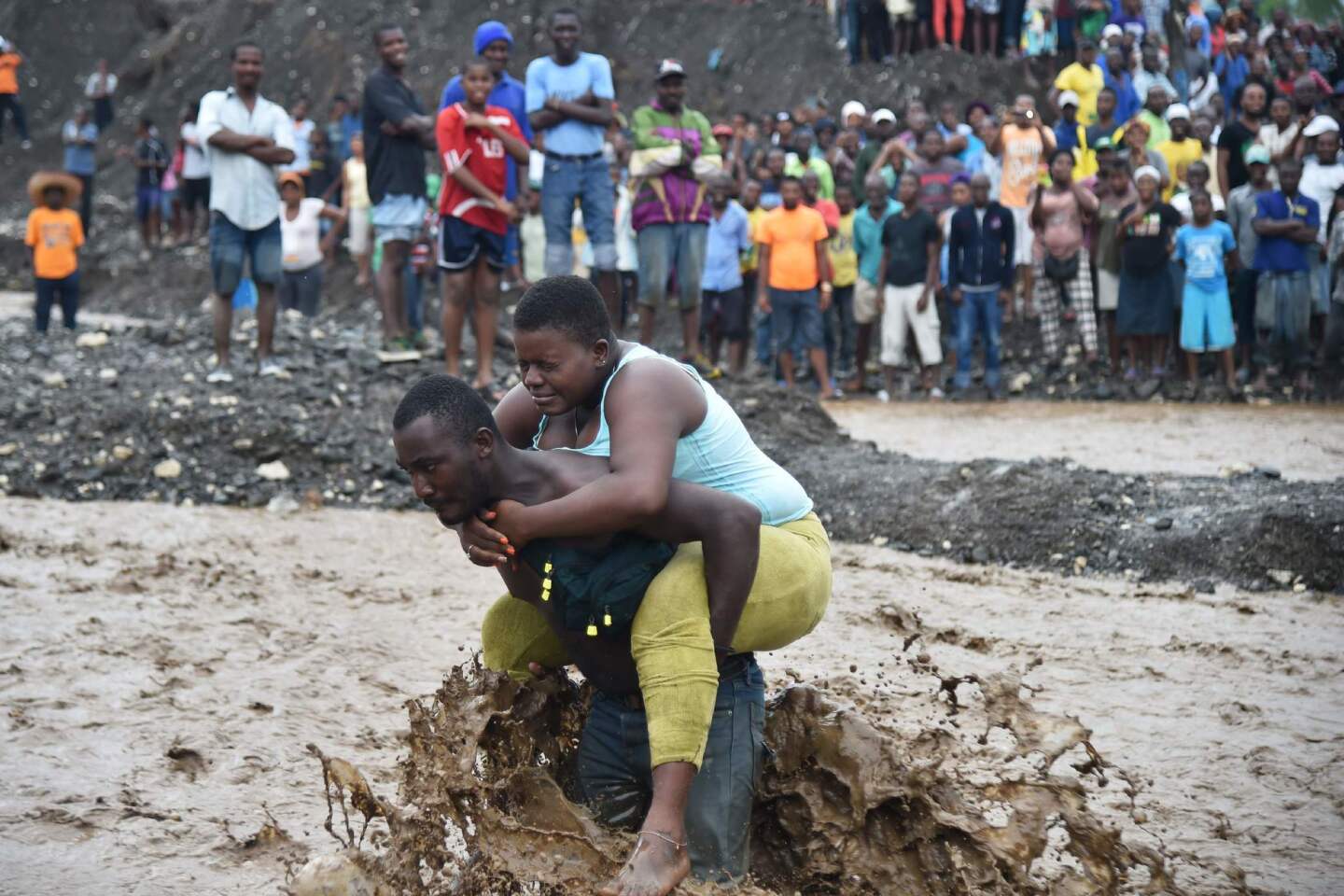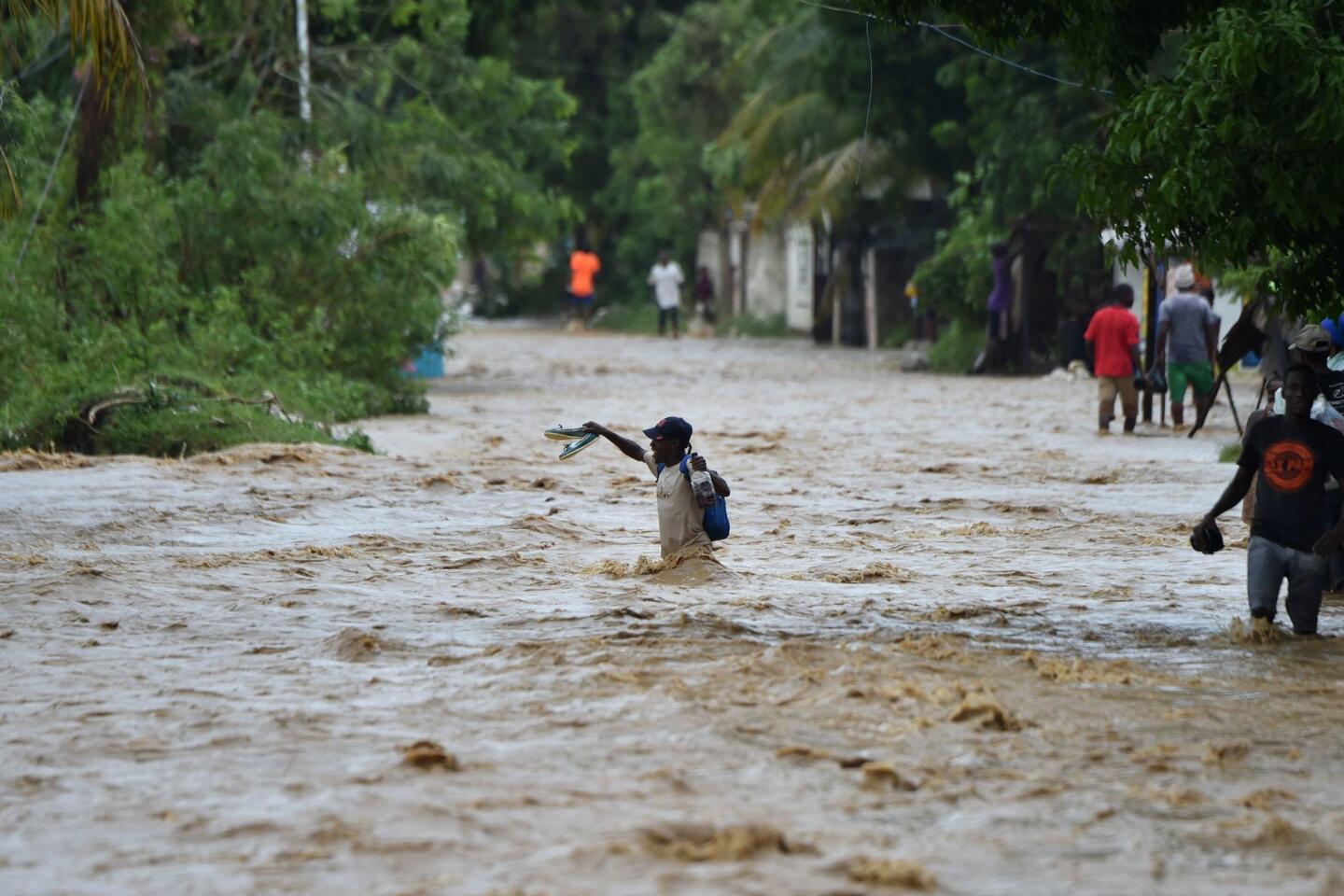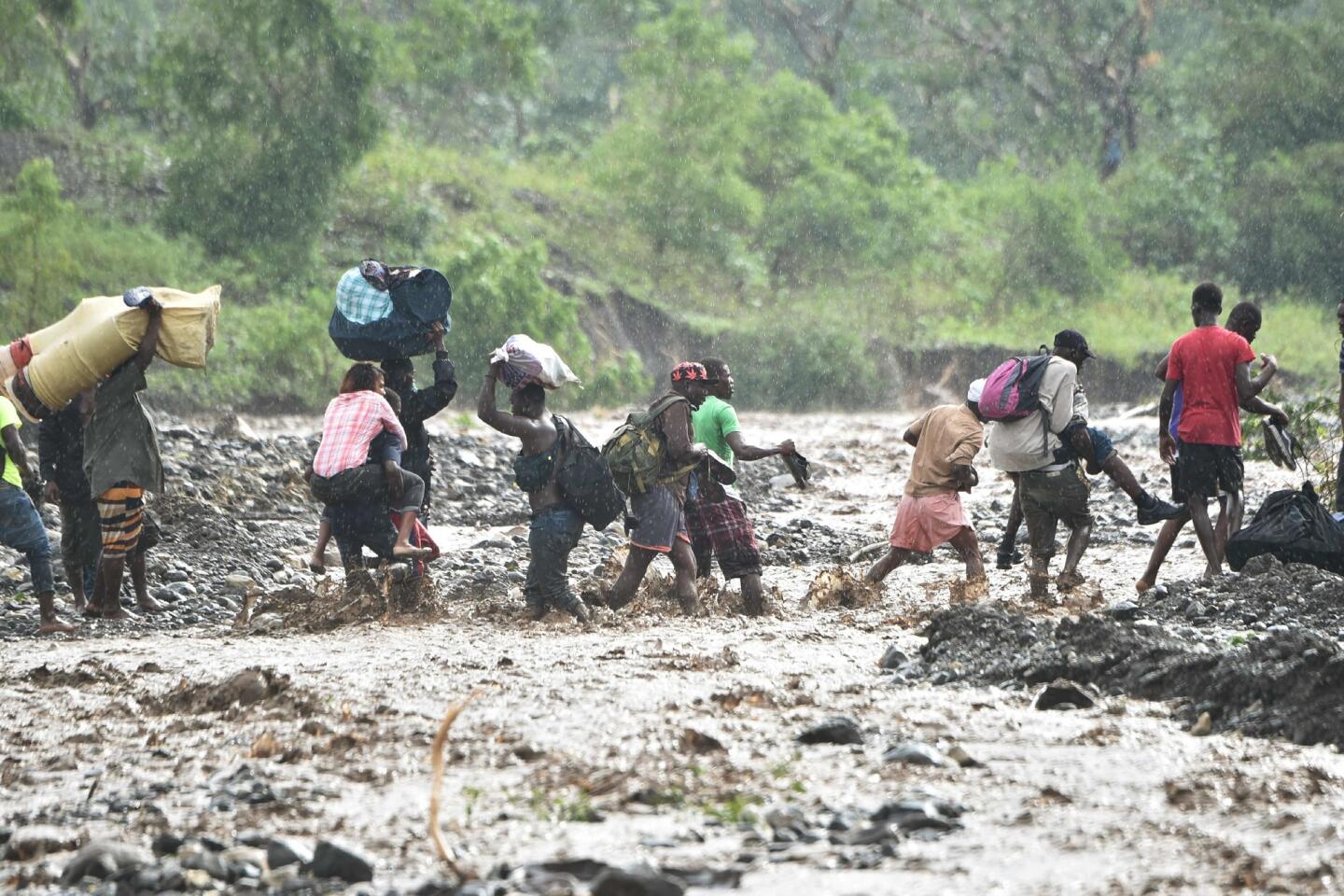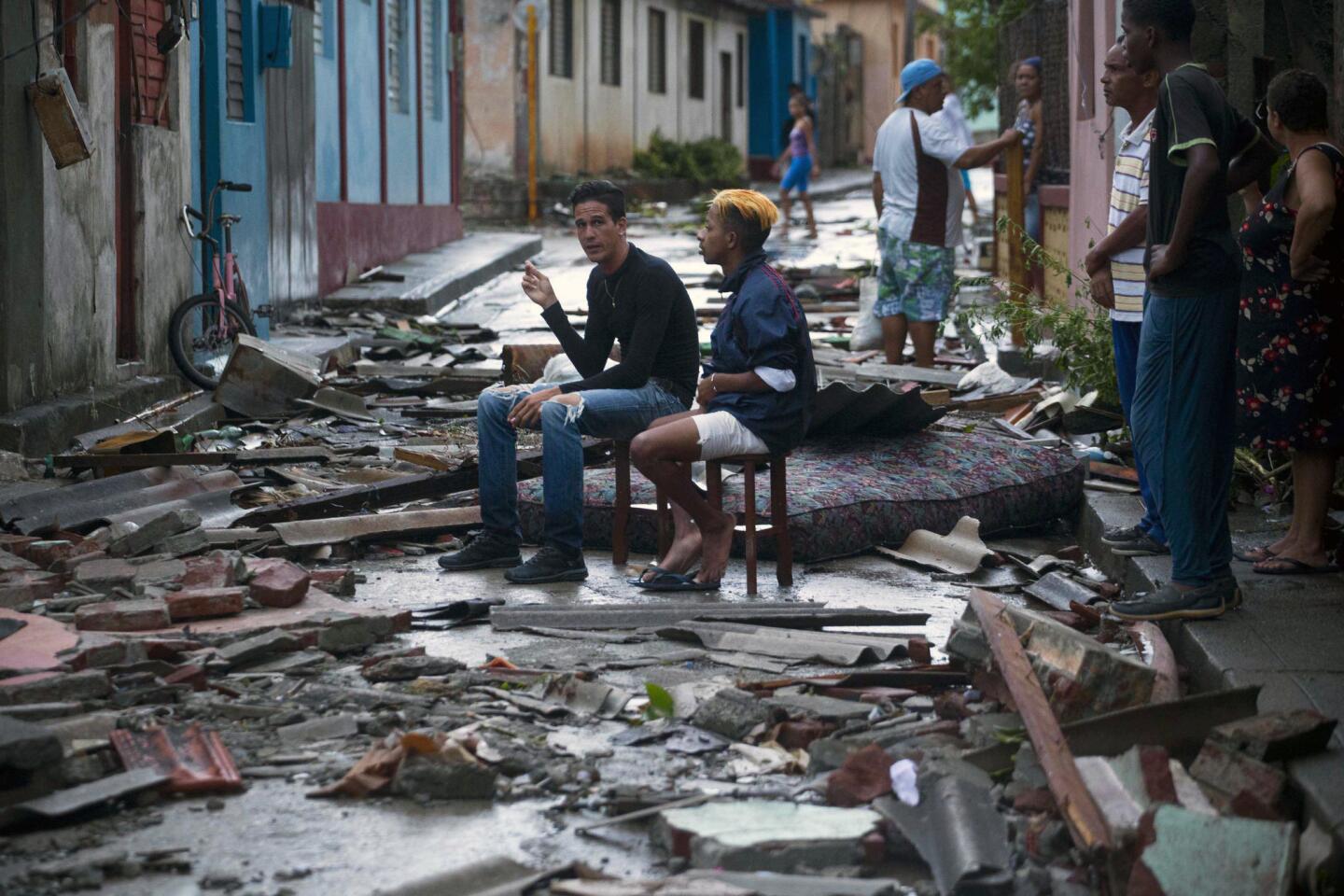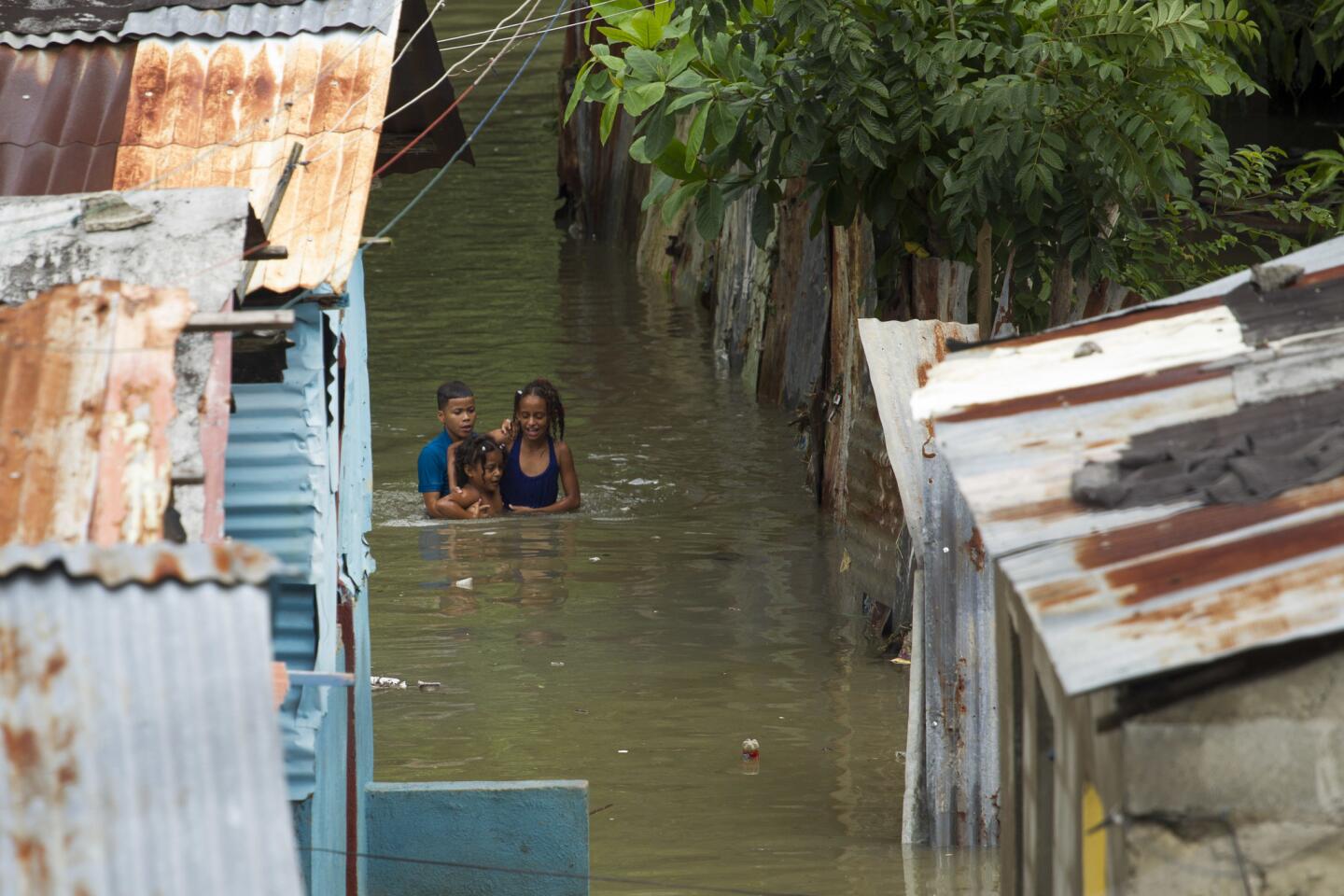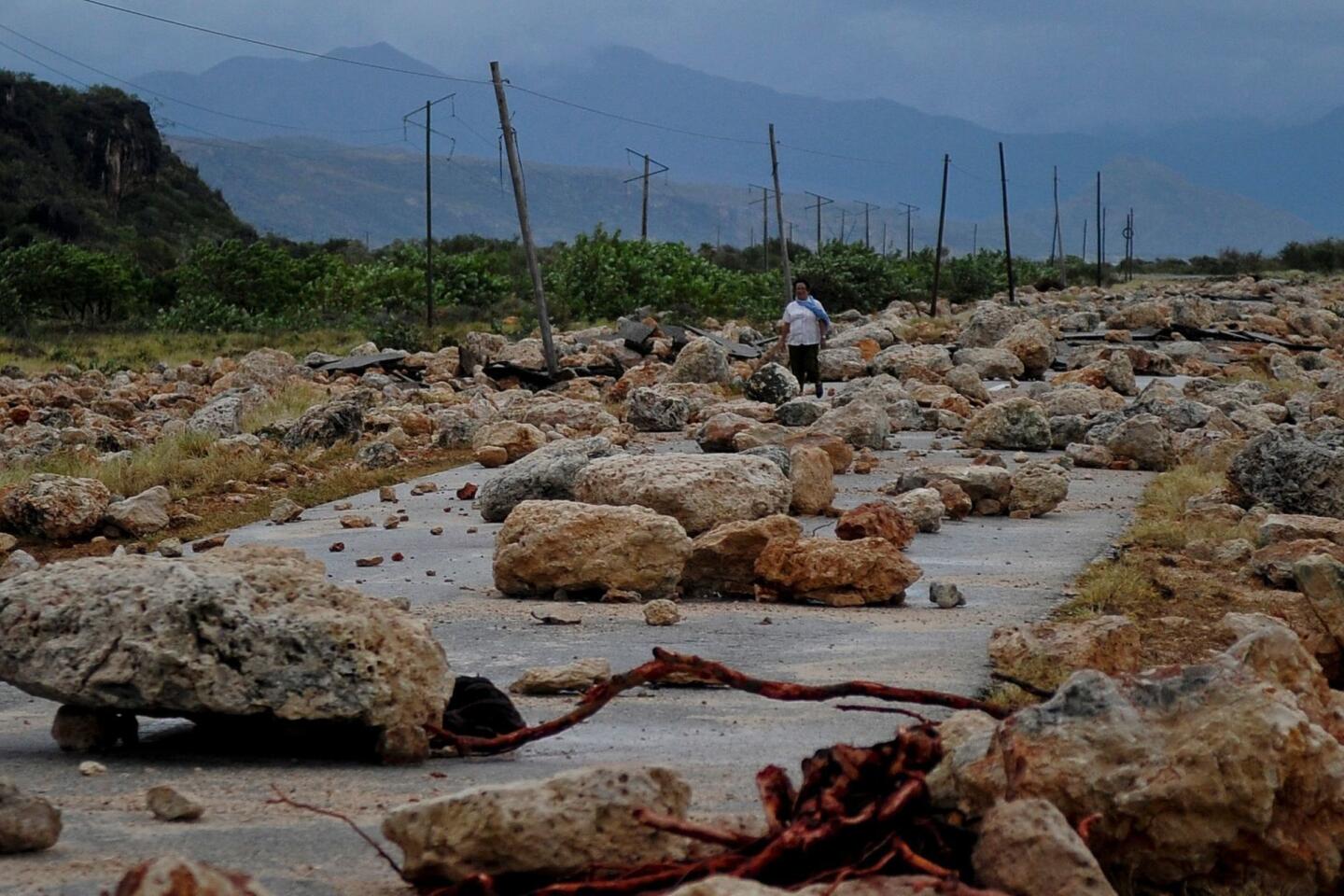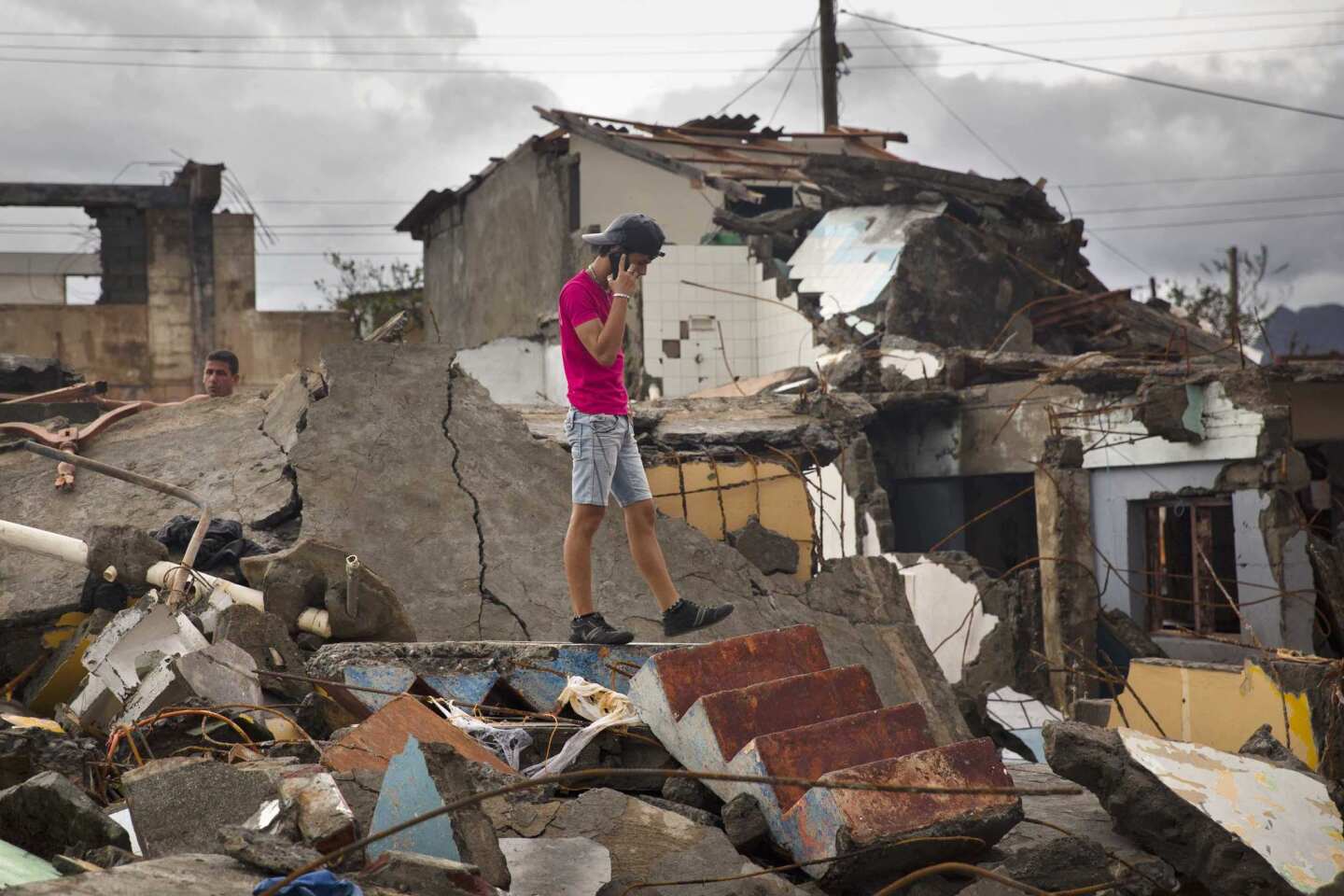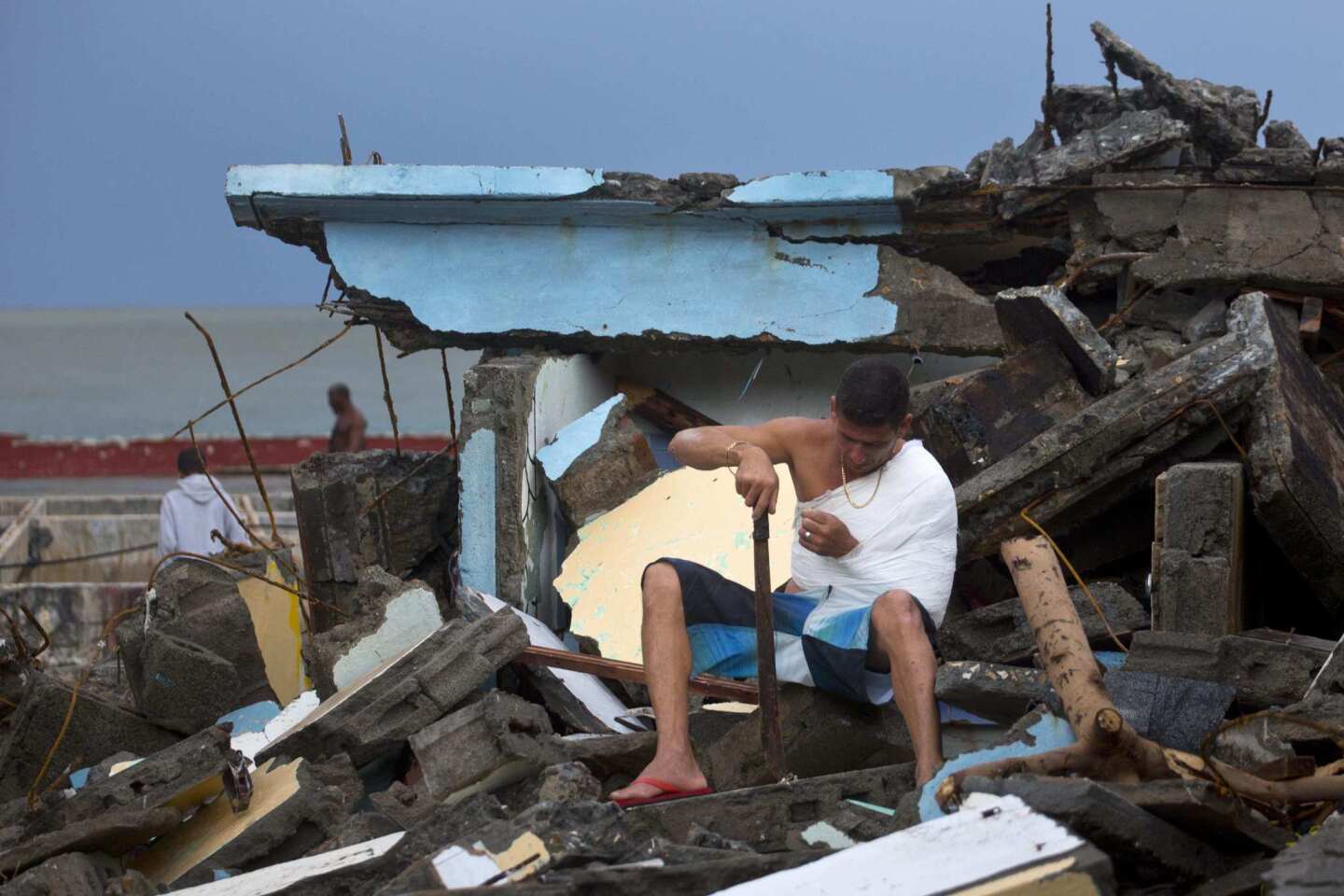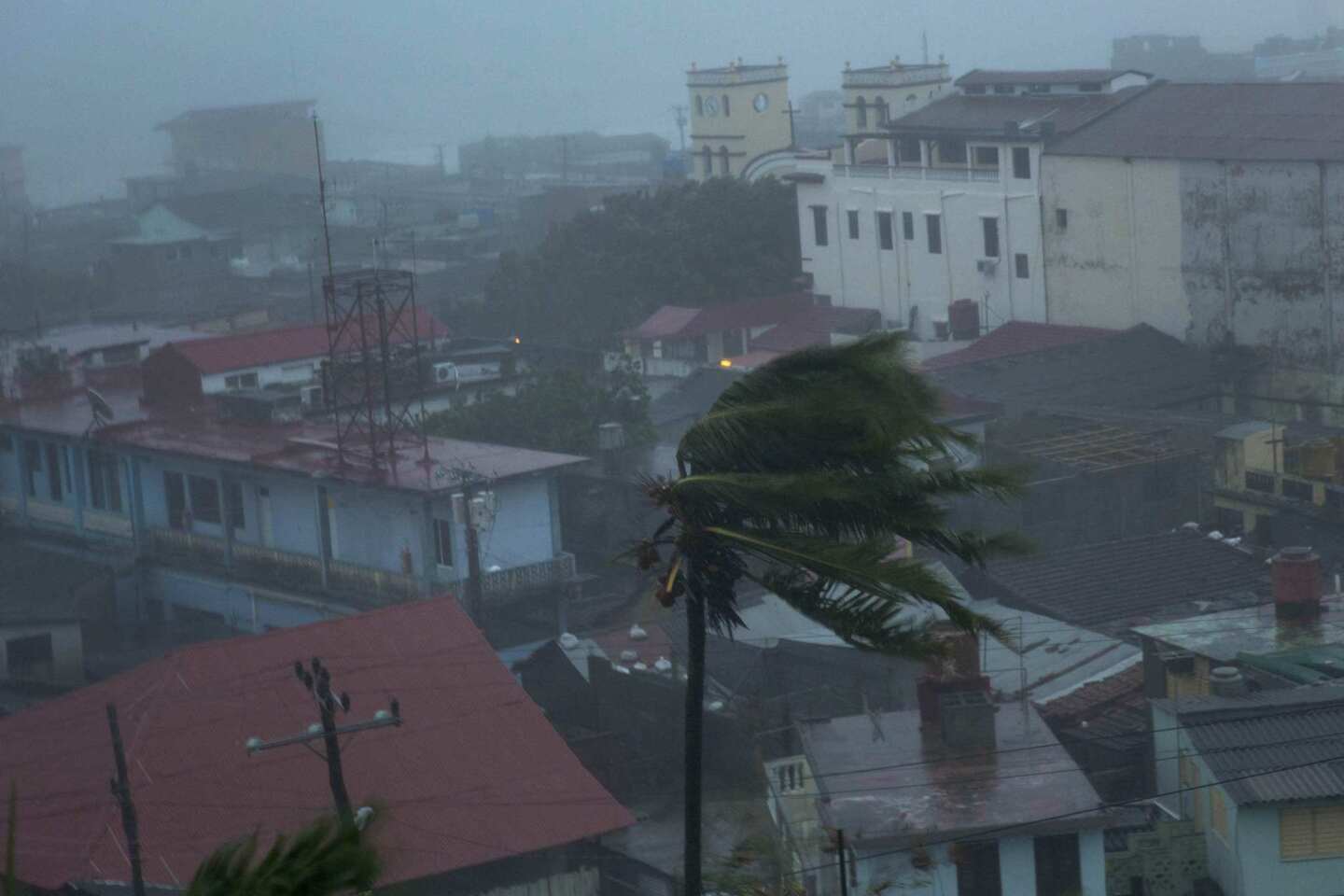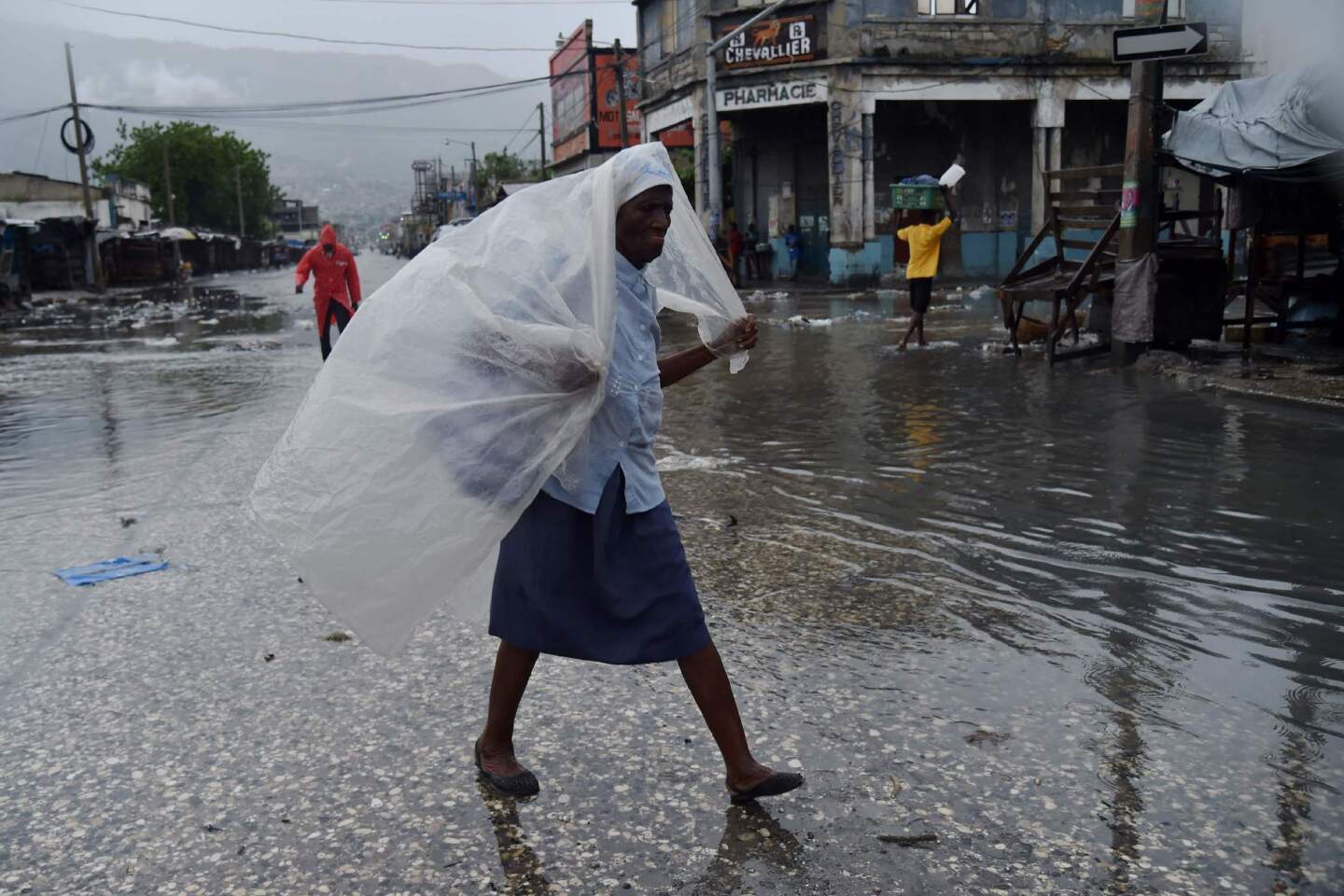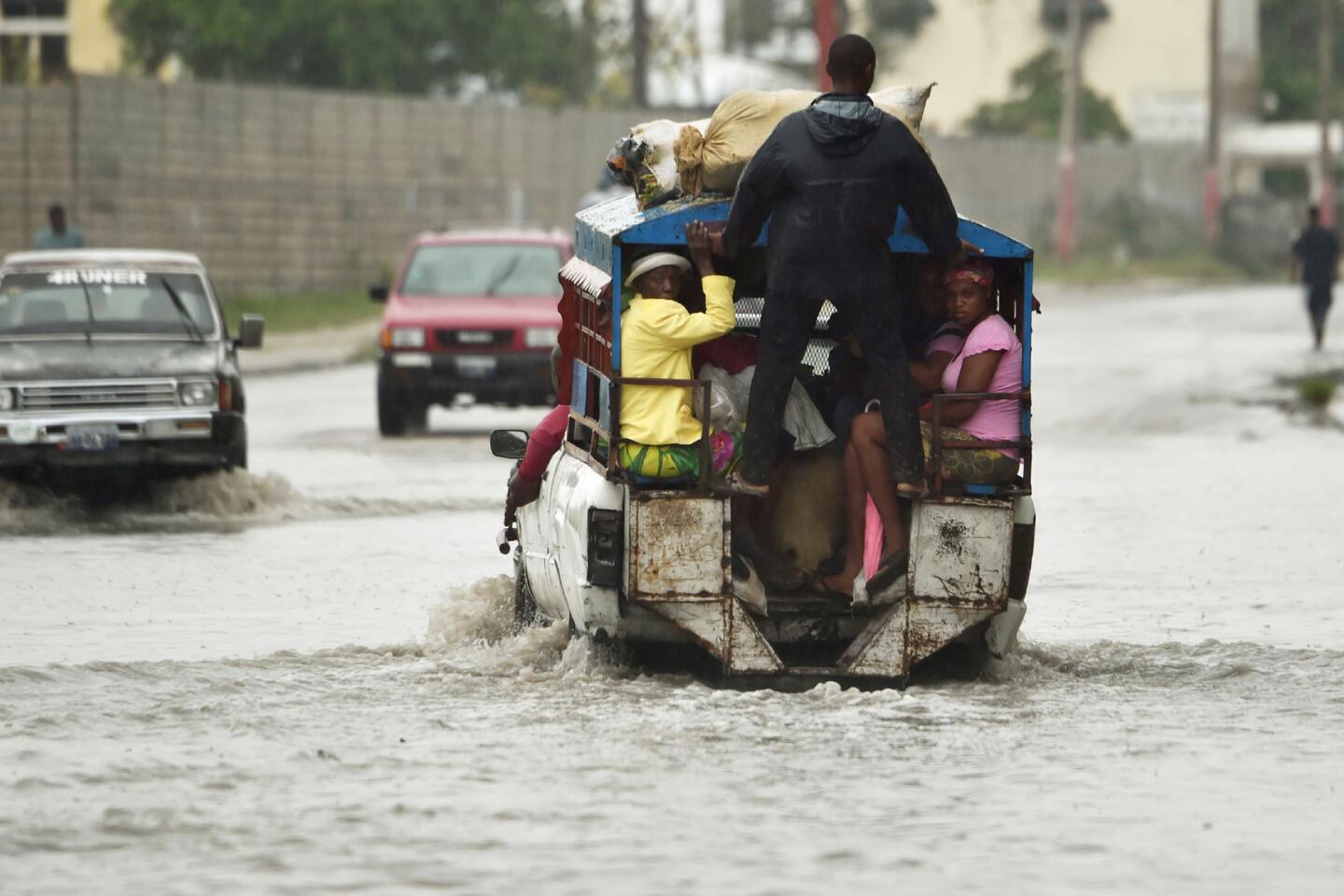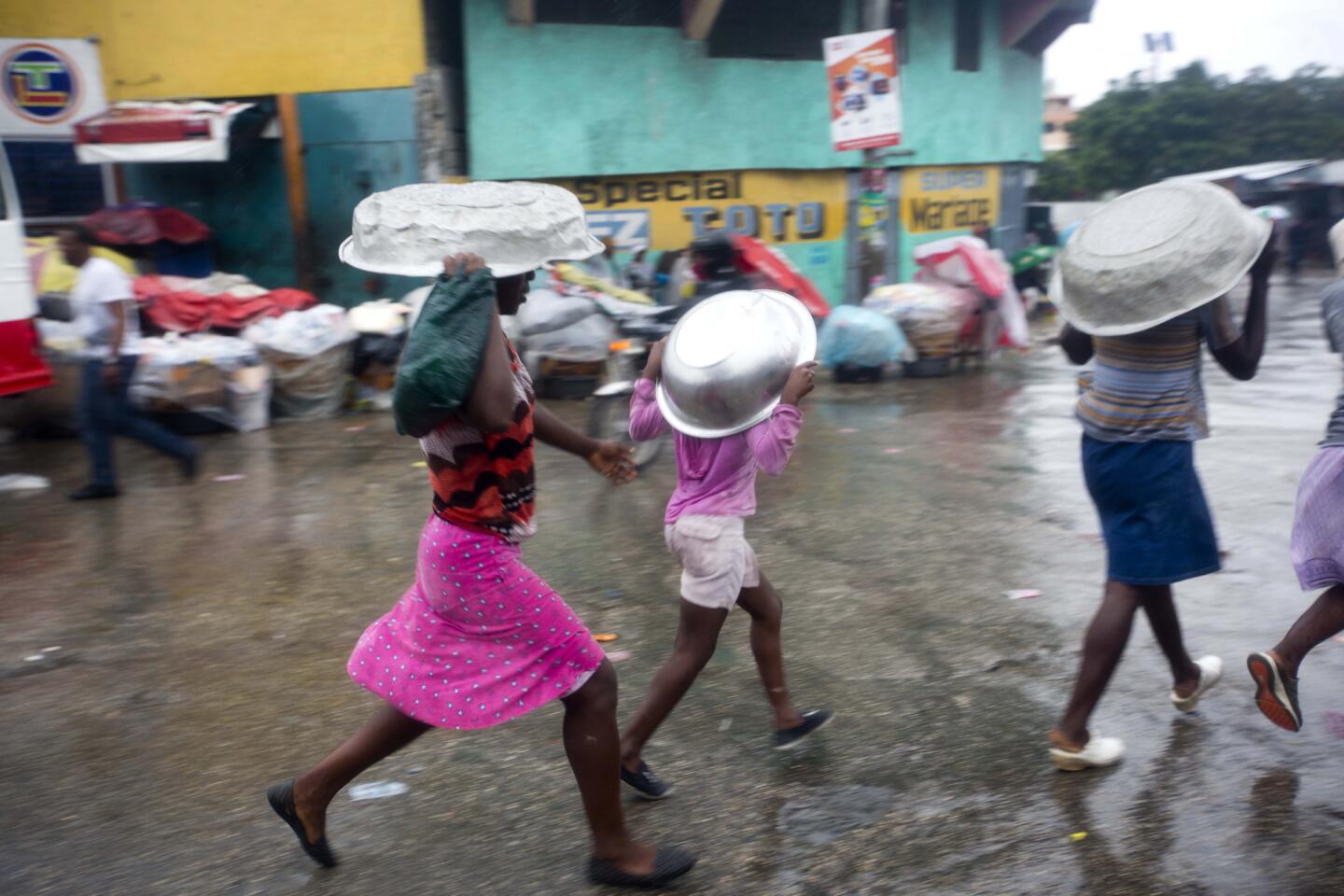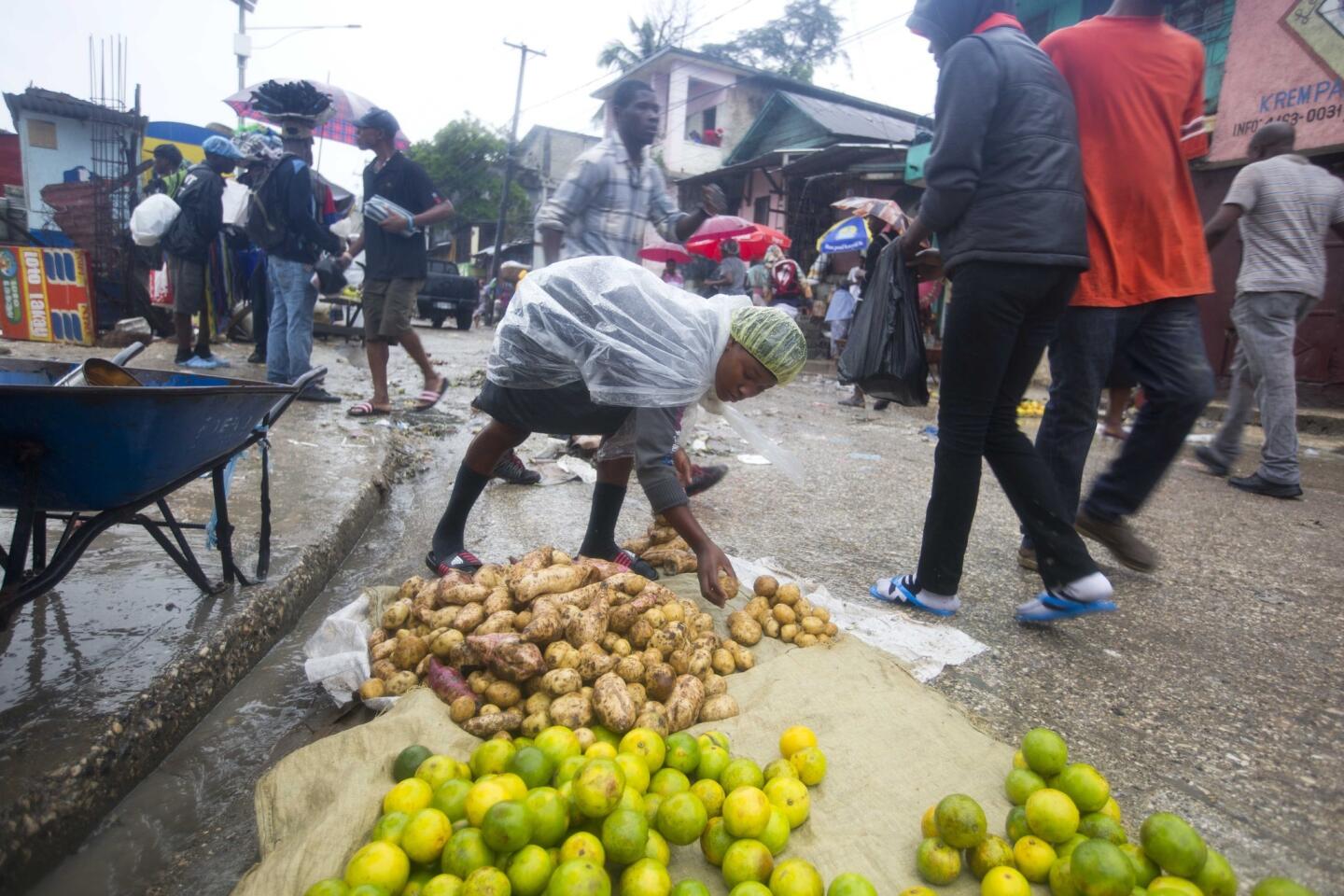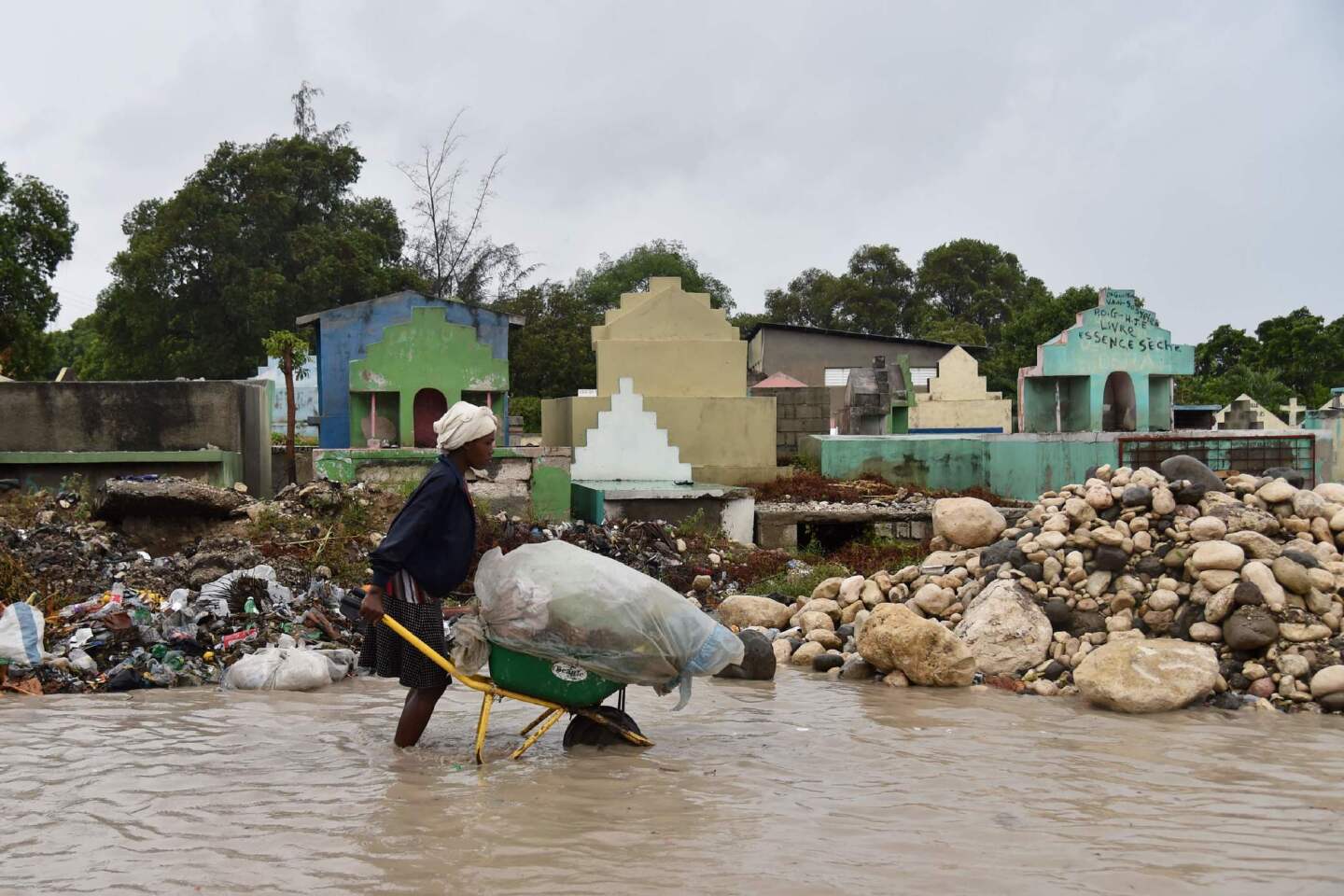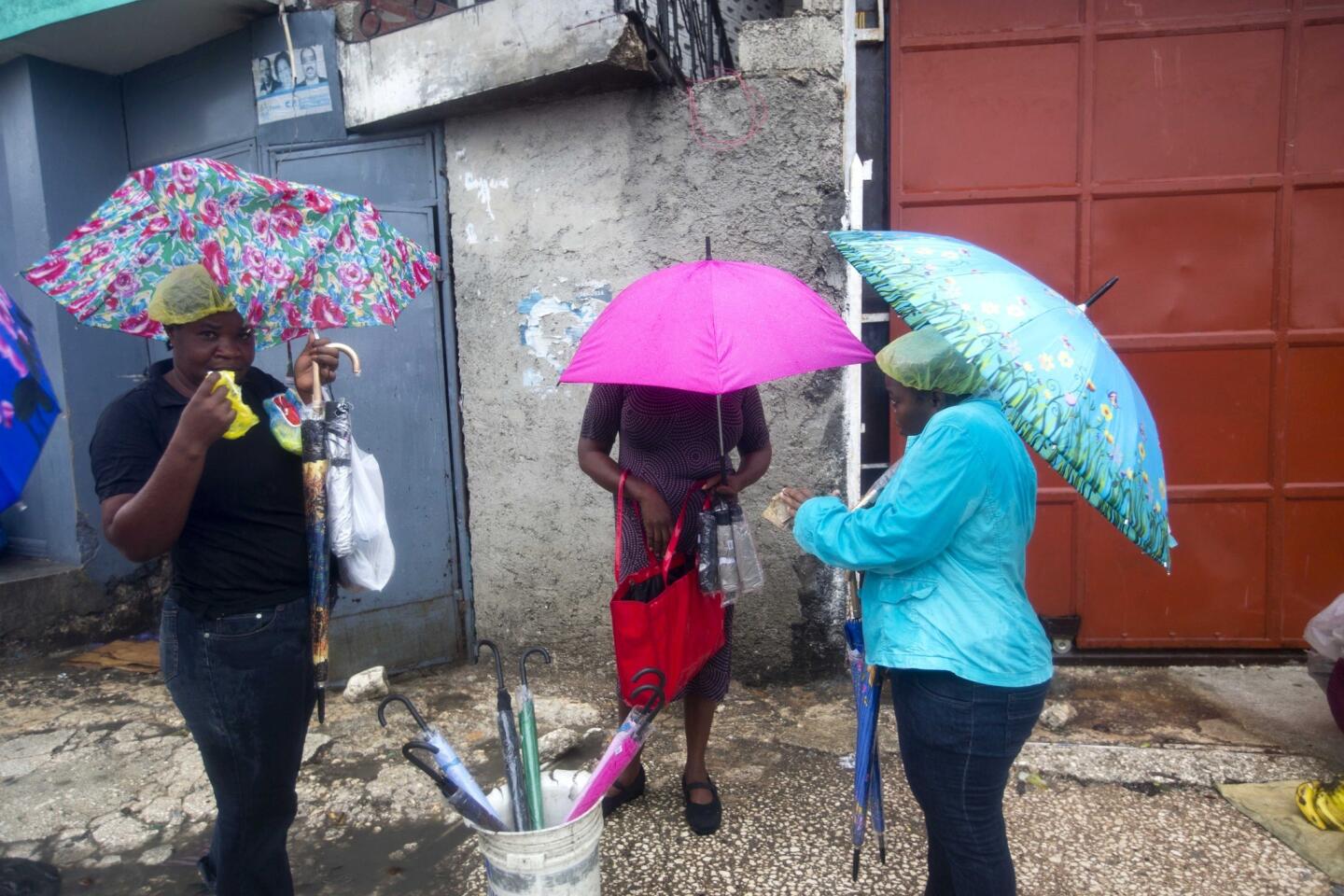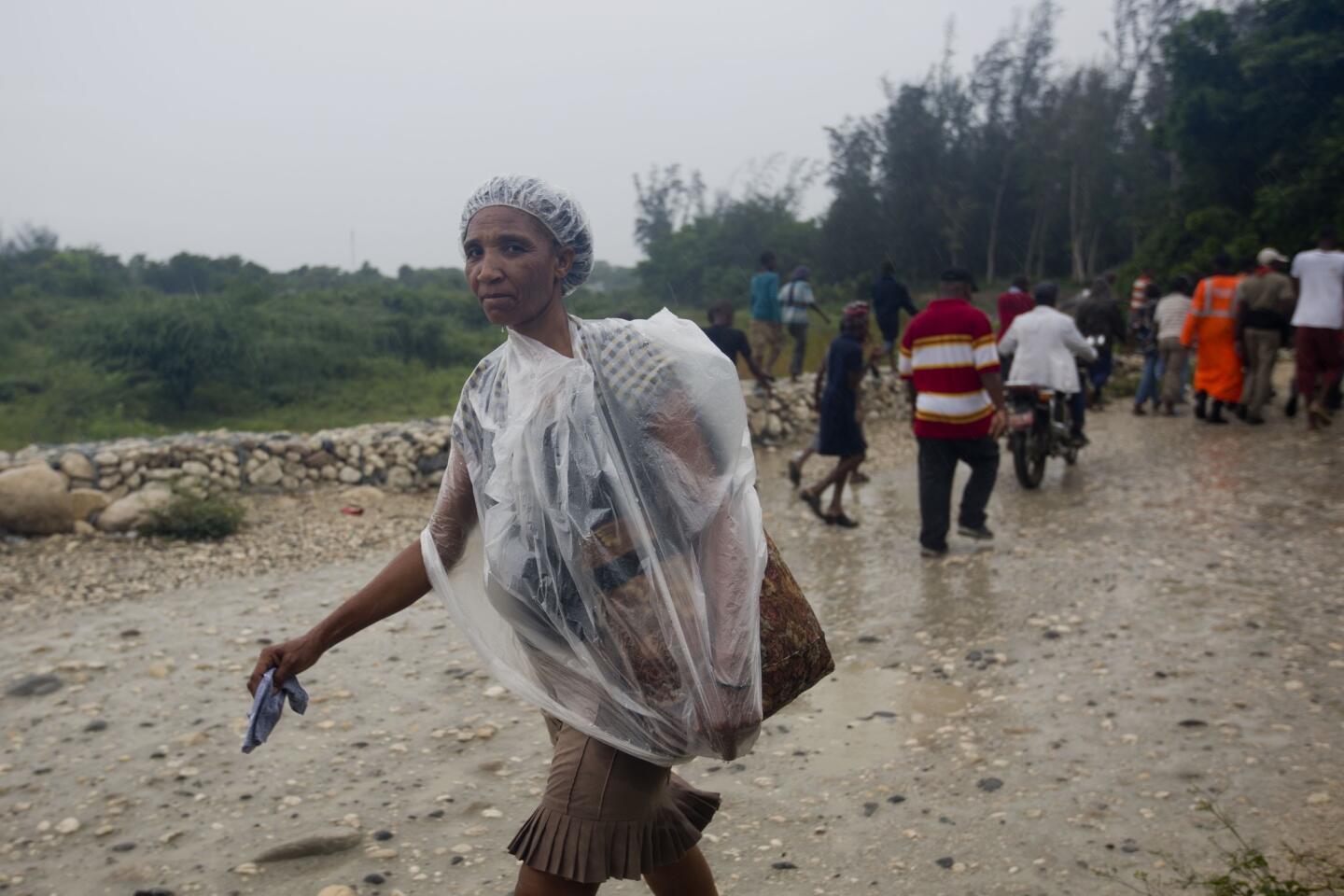Where Hurricane Matthew hit hardest: Hundreds dead in ravaged Haiti
- Share via
Amid a hellish landscape of roofless shacks, shrouded bodies and torrents of tainted brown water, the death toll in Haiti from Hurricane Matthew climbed into the hundreds on Friday as the storm’s full impact became grimly apparent.
Three days after the Western Hemisphere’s poorest nation was battered by 140 mph gales and torrential rains, reports of devastation trickled in from hard-hit, hard-to-reach villages and towns in the country’s remote southwest – a slender peninsula that juts, fatefully, into the Caribbean and the hurricane’s path.
The official death toll stood at 283, according to the Interior Ministry, but news agency tallies, citing figures obtained from municipalities, ranged to more than 800, as international aid agencies and Western governments struggled to rush in desperately needed supplies.
Relief workers stressed that with patchy cellphone service and many areas still cut off by washed-out roads and bridges, it could be days before a reliable death toll emerged – or a full picture of how many more Haitians are in immediate peril.
For some who already had so little, wind and water snatched away whatever remained.
“I have nothing – my hands are empty,” Kimberly Janvier told the Reuters news agency in the already ragged western town of Cavaillon, which was left in ruins.
Hunger, homelessness and disease swiftly emerged as potent threats in cities and the countryside alike. In the ravaged southwest departments of Sud and Grand’Anse alone, at least 29,000 homes were destroyed, officials said.
“We fear that the numbers are going to increase considerably as emergency teams advance,” said Jean-Claude Fignole, Haiti program director for the international aid agency Oxfam. Clean water, food and basic supplies were all urgently needed, he said.
In Jeremie, the main town in Grand’Anse, the hurricane ripped off corrugated metal roofs and leveled homes. Aerial footage showed the destruction of about 80% of the buildings in the city of 31,000 people.
Residents of the town described a terrifying ordeal as the storm blew through, dodging flying sheets of corrugated metal as they fled in search of safety.
“When the roof of my house flew away, I clung to a wall with my left hand, and with my right hand, I held firmly onto my child of three months, who was crying with all his might,” 22-year-old Carmine Luc told Haiti’s Le Nouvelliste newspaper.
Others told of seeing people left injured and bleeding by airborne debris. “The wind was so strong, it was knocking us over,” Fritznel Antoine, a father of three, told the paper.
In impoverished villages where people survive on subsistence farming, the wreckage pointed to misery yet to come: the bloated corpses of drowned livestock and tangles of uprooted crops, representing a crucial loss of livelihood.
Basic foodstuffs became black-market commodities; in Jeremie, the price of rice doubled overnight.
Although Haiti’s capital, Port-au-Prince, was not as badly hit, many families lost belongings and suffered damage to their homes. Even before the hurricane tore through, as many as 60,000 Haitians were living in tents and other makeshift structures in the capital after losing their homes in a calamitous earthquake in 2010.
“The water in the house was up to my waist,” Marcele Duby, who lives in the city’s Truitier neighborhood, told Oxfam. “If it had occurred in the middle of the night I would have lost my children. But it was broad daylight, so I could save them.”
Many streets in the low-lying areas of the city remained underwater on Friday.
International efforts gathered pace. The U.S. sent 350 Defense Department personnel and nine helicopters. Germany, Spain and Canada also joined the rescue-and-relief effort.
France, the onetime colonial power, dispatched a Falcon 50 surveillance plane from nearby Martinique on Wednesday to help assess the damage, and French officials were chartering a plane to send in 60 civil-security personnel and 32 tons of aid, including water-purification equipment and medical supplies.
Water sanitation was an enormous concern in a country that has already seen some 10,000 deaths in a cholera epidemic that erupted in 2010. With creeks and rivers having overflowed their banks, rescue workers told of pit latrines subsumed by floodwaters and graves unearthed in the torrent.
Children, as in catastrophes elsewhere, were poised to suffer disproportionately, vulnerable to water-borne diseases and malnutrition. An estimated half a million children live in two administrative departments at the heart of the hurricane zone, according to the United Nations children’s agency UNICEF.
At least 175 schools were heavily damaged, the agency said, and another 150 schools have been pressed into service as shelters, with classrooms unlikely to be reclaimed for teaching any time soon.
“We’re still far from having a full picture of the extent of the damage,” said Marc Vincent, Haiti’s UNICEF representative. The agency, he said, was “bracing for the worst.”
Many of the affected areas are accessible only by helicopter or by sea, said the World Food Program’s country director, Carlos Veloso. But even seagoing access was limited by damaged ports and storm-smashed infrastructure, he said.
Twitter: @laurakingLAT
ALSO
A detailed look at Florida cities where Hurricane Matthew may cause flooding
Here’s what Hurricane Matthew looks like before slamming into the U.S.
As Hurricane Matthew approaches South Carolina, many residents are staying put
More to Read
Sign up for Essential California
The most important California stories and recommendations in your inbox every morning.
You may occasionally receive promotional content from the Los Angeles Times.
